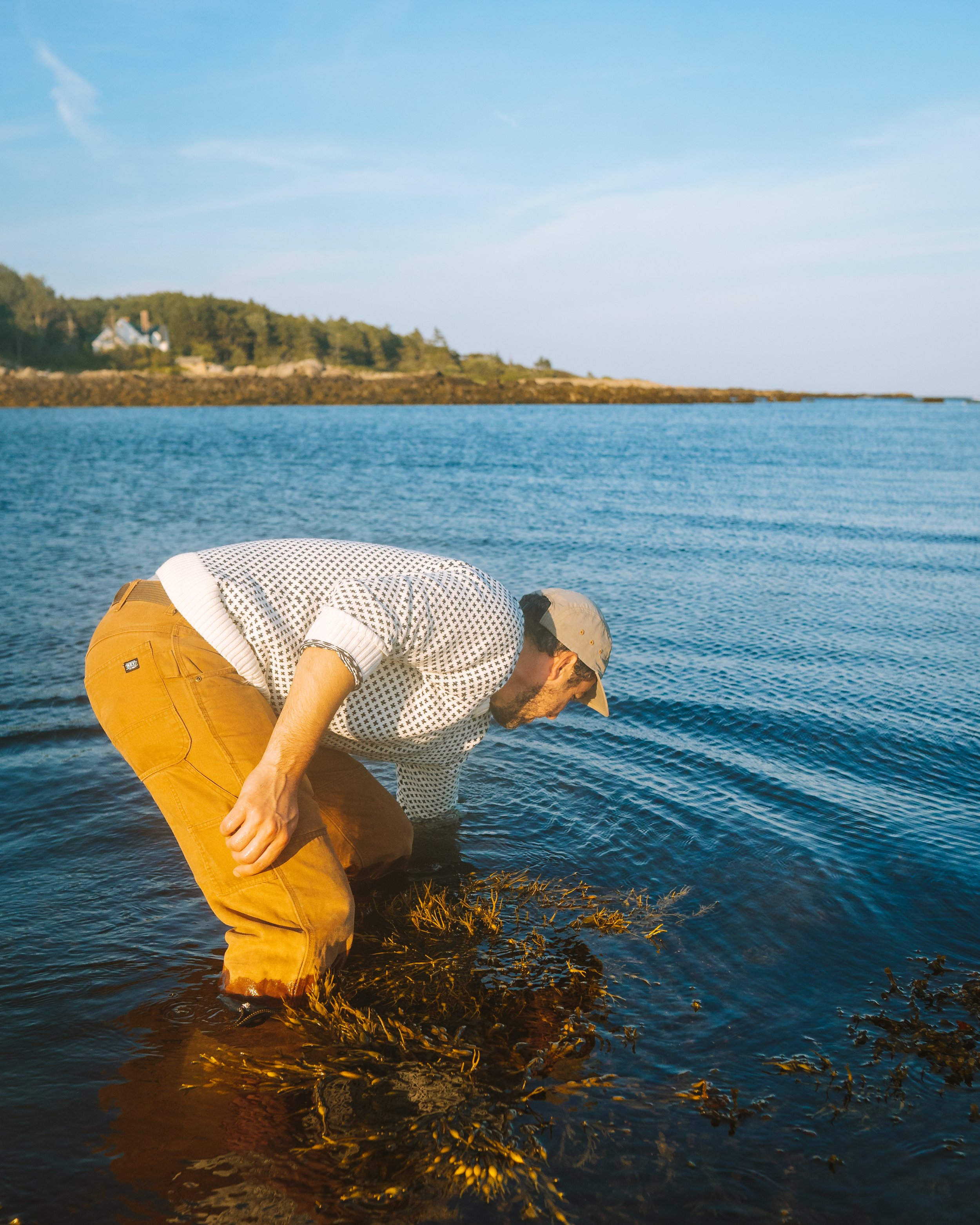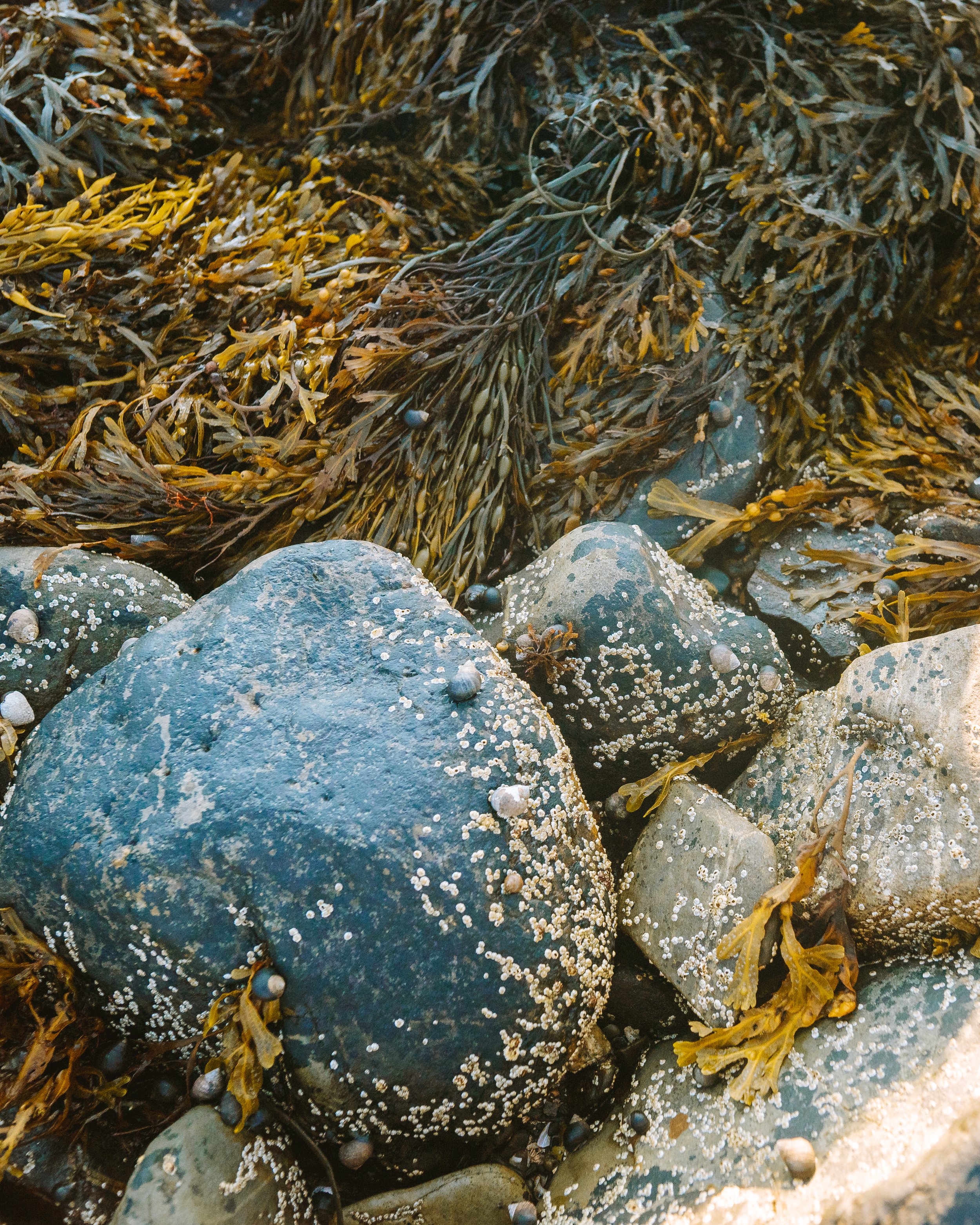A Rare Adventure: Coastal Foraging

Searching for wild food sources has been at the center of human existence since the beginning of time, yet somehow its become a foreign experience for many of us. Our friend Max (@ablicki) joined Dave Labbe (@the_peoples_forager) for an evening outdoors up here in New England on A Rare Adventure: Coastal Foraging.
There are over 2,000 different species of plants in Maine and that’s not even counting fungi - you can add another 2,500 of those to the list. We won’t even get started on seaweed and kelp. It can be a little bit daunting to learn and identify what’s out there…but Dave Labbe (@the_peoples_forager) has spent the last couple years learning about these different species in Maine and New England, identifying and foraging different plants and fungi. The rewards are sometimes culinary delights, traditional medicines, new knowledge, and social benefits - as Dave donates 100% of his profits to charity.
Dave is the production manager at Oceans Balance in Biddeford, Maine (@oceansbalanceinc) - an award winning company that specializes in making unique culinary products out of seaweed and kelp with a mission of sustainability, solid environmental practices, and tremendous support for the growing seaweed and kelp industry in the gulf of Maine.
Not only is seaweed responsible for most of the oxygen on our planet, but it has the ability to sequester copious amounts of carbon from the atmosphere- and since it’s loaded with vitamins and minerals, it’s incredibly good for you.
I met with Dave on a beautiful August evening, and we explored one of our favorite beaches in search of seaweed and other wild foods. In just a couple hours, we’d find some amazing things growing right between the rocks on the beach and in the coastal forests of Maine.
As we started our hike, we found wild blueberries - small but exploding with incredible flavor. As we progressed toward the ocean, Dave noticed a cluster of Indian Pipes - a ghostly looking plant most similarly related to blueberries, but with medicinal properties when processed properly. I noticed a cluster of blackberries as we neared the ocean - and Dave introduced me to the Northern Bayberry; its leaves can be used as a substitute for bay leaves, they can be steeped into tea, some people even use the natural wax from the berries to make candles.
As we broke out to the oceanfront, Dave identified a sea rocket growing in the beach stones, which had incredible flavor - leaves with the texture of spinach but with a mustardy, almost wasabi-like bite. I took a few of these leaves home with me, and julienned them and put them over Pemaquid Oysters - it was an unbelievable combination, and a reinforcement to the idea that things that grow together might go together.
We found ourselves down at the water, traversing the slippery rocks covered in rockweed, left exposed from the low tide. Dave decided to get in the water to search for some kelp, almost immediately finding a piece of sugar kelp, Kombu. Kombu can be used to steam fish and vegetables, or in sushi rice to add a beautiful depth of flavor. I recall at one point in a local restaurant - I had a dessert which was an apple that had been slowly steamed in Kombu. It was one of the most unique, and best desserts I’ve ever had.
As the sun started to set, we called it a night - with a few jars full of sea rocket and some bayberry leaves for future recipes, but leaving most of what we found behind to continue growing - we headed back home. For me, I had a newfound knowledge of what’s hiding at our feet, over our heads, and just a quick glance into the woods. While it’s not even the tiniest scratch of the surface for foraging in Maine, let alone foraging in New England - I can’t help but feel like the next time I find a sea rocket I’ll probably be having oysters and sea rocket the next night, and I’ll probably never buy bay leaves from the store ever again.
However, with that being said, it’s always important to double and triple check what you’re foraging and consult with someone who knows what they’re doing if you’re unsure about what you’re looking at - there is a wealth of information online and in the hands of people who have practiced this craft. Before you eat anything, you should always be absolutely certain that you have the right thing. If you are unsure, leave it, take a picture, and research it more.
The beauty of foraging, in a similar sense to surfing, is that you just have to be there to find it. Everything is dependent on the environment. The ecosystems, the rains, the tides, the skills, and the knowledge of the forager…it’s an impressive craft that connects you with nature, and helps you to become more mindful of the things around you- taking only what you need, leaving the rest for Mother Nature, and leaving no trace behind you.
For more foraging, wild foods, and future foraging classes, follow Dave Labbe (@the_peoples_forager)
-MAX ABLICKI (@ABLICKI)
SHOP THE SEAWELL™ COLLECTION



















